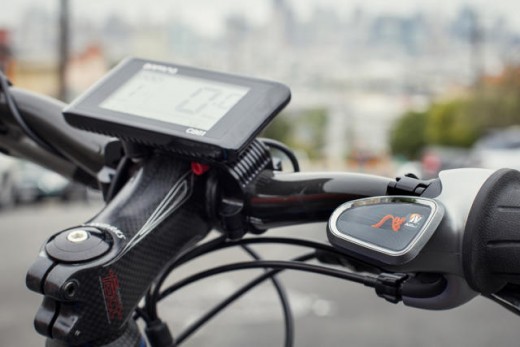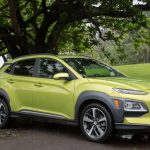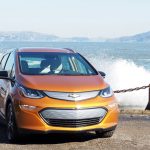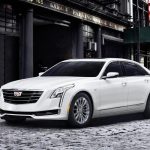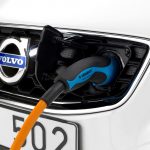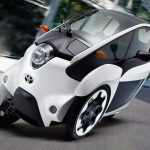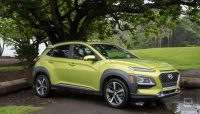Is This The E-Bike That Finally Gets Commuters Out Of Cars?
With lighter batteries, lower prices, and sleeker designs, the latest e-bikes might finally turn more people on to a commute on two wheels. The Karmic Koben is a good place to start.
I live at the bottom of a hill so steep that some cars have trouble making it up, and local cyclists call it the “death ride.” I’m not in particularly good shape. But the other day I started cruising up on a bike, pedaling easily past a spandex-clad guy on a bike with enormous calf muscles. I had a secret weapon to thank: my bike’s electric motor.
I was testing the Karmic Koben, a new e-bike now on Kickstarter. While e-bikes aren’t new, this one has a few advantages. Because of a custom battery, it weighs a couple dozen pounds less than popular electric bikes on the market now. And it’s significantly less expensive, as part of a strategy to help get more people out of cars and onto bikes for their daily commute.

“I’ve been a long-time cyclist and riding for 20 years,” says Karmic Bikes founder Hong Quan. “I’ve owned a ton of bikes. I never even really thought about getting an electric bike, but I tried one on a whim last year and thought it was awesome—it was really fun. But the really great electric bikes are really expensive. So I started tinkering in the garage and started building my own, thinking, why can’t we build a much better electric bike for a much more affordable price point?”
While high-end electric bikes can go for as much as $5,000, the basic version of the Koben is offered on Kickstarter for $1,337. It’s not the only e-bike aiming for more affordability. The Wave, a competitor now on Indiegogo, is offering a crowdfunding special of $549 (the bike will retail for $999). The Storm, an e-bike that managed to raise $3.3 million earlier this year through crowdfunding, was offered for even less ($499). Some argued that the Storm was too cheap to be feasibly produced, though the final price will likely be at least $1,300—and it seems clear that price is possible.
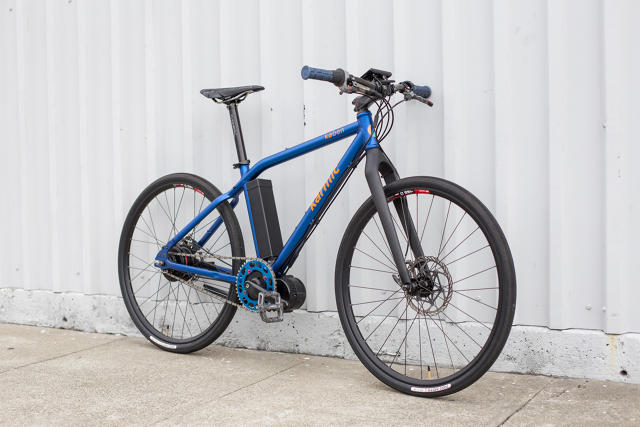
For the Karmic designers, the key was choosing the right parts to include. “It’s just being smart about what parts you use and don’t use,” Quan says. “A lot of e-bikes start with a regular bike and then you’re just adding and adding until you get this big huge beast of a monster that’s more akin to a motorcycle than a bicycle. We start the opposite way: We start with the battery and then build anything we need around the battery, leaving out what we don’t need.”
For optimal performance, the Karmic team focused on designing a smaller, lighter battery, which keeps the overall weight of the bike down—creating a virtuous cycle that means the battery (and the rider) doesn’t have to work as hard to keep going for a 25-mile ride. An internal gear hub makes shifting smooth. The motor is placed low, next to the pedals, making the bike easier to handle than a typical motor in a wheel. The rest of the bike is relatively simple, to keep the cost affordable.
It feels basically like an ordinary road bike—just easier and a lot more fun to ride. When I pushed a button to get more help from the motor, it felt like someone was giving me a push, or the hill was getting flatter. Like some other recent e-bike designs, it’s better-looking than clunkier earlier models. It’s also a little simpler to charge; at home, the battery pops out easily to bring inside to plug in.
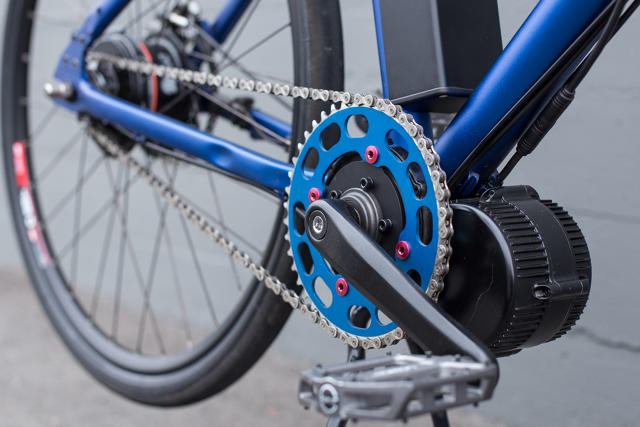
Unlike other e-bike batteries, this one is also designed to last for life. The unique design makes it possible to pop out individual cells for recycling and reuse. Eventually, the company hopes to scale the battery up for use in other types of vehicles.
Quan hopes to convert people who are already riding standard bikes. “I still own a dozen bikes,” he says. “But I use the electric one the most because it’s the most fun.”
The company also hopes to get people out of cars. “Everybody knows how to ride a bike, but a lot of people stop,” Quan says. “It’s inconvenient, it’s hard, you get sweaty, you live too far away. But an electric bike solves a lot of those concerns. It’s a good option to commute when you never would have considered doing a bike commute before.”
Right now, electric bikes still only have a tiny share of the U.S. market. Out of around 16 million bikes sold in 2013, only about 150,000 were e-bikes (compare that to 25 million in China). Still, that was double the amount sold the year before. And as manufacturers continue to bring prices down, it’s possible that lower cost could help start to push e-bikes into the mainstream.
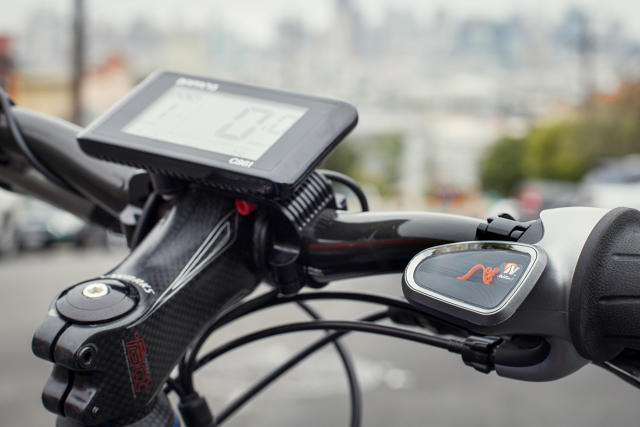
“In the electric bike business, I would say that having the right product has been more important than having the right price,” says Ed Benjamin, senior managing director for eCycleElectric, a consulting firm for the industry. “But having the right product at a low price is clearly the right combination.”
While it’s been possible to get a low-end Chinese e-bike for some time—with a heavy lead-acid battery and a questionable lifespan—it’s only now that truly desirable e-bikes are becoming available for a price that’s not so different than a basic commuter bicycle without a motor. And that’s converging with the proliferation of bike lanes across U.S. cities, making bike commuting a better draw than it has been in the past.
“The U.S. is not a bicycle-for-transportation culture,” says Benjamin. “It’s a bicycle for fitness/sports/recreation culture. But that’s starting to change. And at the same time, electric bikes are becoming more reliable, more available, and more cost-effective. The rate of change in electric bike sales is impressive. I’d say we’ve got a good thing going on there.”
Fast Company , Read Full Story
(183)

